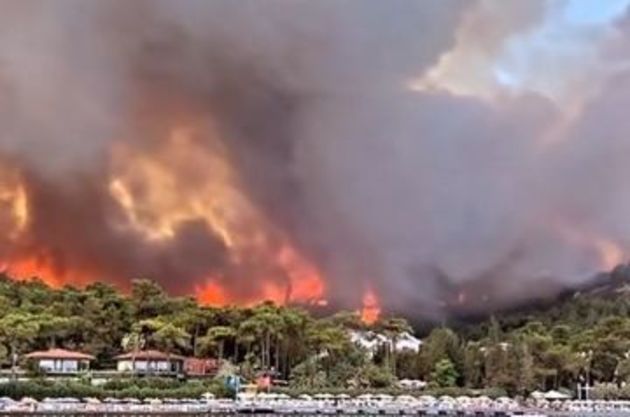This was not a fire, this was a disaster, head of the Directorate of Forestry in Turkey's Antalya Vedat Dikici said.
Dikici explained how the wildfires spread in Antalya where they caused destruction for 10 days.
He told Demirören News Agency (DHA) Friday that 75,000 hectares of land were damaged in the fires, out of which 50,000 hectares were covered in forests. He said firefighters battled fires amid extremely hot weather with nearly zero humidity and winds reaching about 84 kilometers per hour. “The ground was heated due to the smoke from other fires and soon, there was fire everywhere,” he said.
The massive fire began in four different spots in Manavgat on July 28. It grew and was accompanied by new fires that broke out in Gündoğmuş, Alanya, Akseki and Ibradı districts. Overall, 59 neighborhoods, mostly in rural parts of Antalya, were affected by the fires which prompted evacuations and completely destroyed some villages. Seven people were killed in Antalya, including two firefighters and people trapped in their homes during the blazes.
The blaze was nothing unusual in the fire season where high temperatures boost wildfire potential in the region which has a Mediterranean climate. Antalya has seen more than 180 forest fires this year. However, Dikici said the fires that broke out on July 28 were “a great disaster.”
“We had 160 forest fires up until the Manavgat fire and we are always on alert. Antalya has around up to 300 forest fires every year,” Dikici said. Experts say climate change that has worsened the effect of seasonal temperatures is among the main culprits of the prolonged wildfires.
Dikici said temperatures were above 40 degrees Celsius at the time of the fire and the weather was dry without any humidity one day before the Manavgat blaze started. In the second fire, which broke out in the Kepezbeleni district, Dikici said strong winds thwarted their work.
Turkey now plans to replenish the burned areas with new forests. Minister of Agriculture and Forestry Bekir Pakdemirli said field studies will be conducted in burned areas before preparing the ground for planting scheduled after the first precipitation, “likely in November.”
“Those places will be evergreen again within five years,” Pakdemirli told Anadolu Agency Friday. “We will plant around 252 million saplings,” he said.






